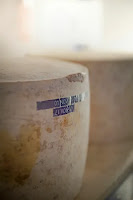I'm not touching what's going on with that, except to say huzzah for Black History.
Now, on to the Native Hawaiian portion of my reading this month. Which was Hula by Jasmine Iolani Hakes. Of all the books I've read for heritage months this year to date, this is the one that has made me the most aware of my ignorance of other groups. I had vague knowledge that historically U.S. involvement with Hawaii was not our finest hour. But for the most part, I just thought of Hawaii as a vacation destination. I didn't even know about the 1993 Apology Resolution, in which the U.S. government recognized its part in overthrowing the Hawaiian government in 1893.
Hawai'i is spelled Hawai'i, but because it was spelled Hawaii in the act making it a state, Hawaii has to be used in many situations. I mention that, because I have a thing about how groups lose their language after becoming part of the United States.
My last Heritage Month book, The Buddha in the Attic by Julie Otsaka, used a collective narrator/first-person-plural point of view/narrator. Lo and behold, Hula does, too! At least some of the time.
There are two things going on in this book. In part it is the story of three-generations of women in a Hawaiian family in which the question of what does it mean to be Hawaiian is very important. In part it is the story of Hawaiian culture. When the book is focusing on Hawaiian culture, the collective narrator is used. That narrator pretty much disappears when the second and third generation women take center stage.
Though not humorous, Hula reminds me of the fantastic new Netflix sitcom North of North in which a woman leaves her husband and is starting a new life. Seen it before, yeah? The big draw here is the woman is Inuit, and the story is set in her contemporary Inuit village. We're seeing someone else's world. Like North of North, Hula rises above being something we've seen before, another mother/daughter identity drama. In this case, the story is set in late twentieth century Hawaii, where we see another world, and the characters are Hawaiian.
Or are they?
Hula can be a little demanding to read at times, because the characters use a dialect that will probably be unfamiliar to a lot of mainland readers. But it's worth the effort because of the wealth of knowledge about Americans who we rarely see unless they are the backdrop to a vacation story.
Hula, the dance, by the way, is so much more than a dance. This clip from This Morning covers the Merry Monarch Festival and the hula competition that is part of it, both of which are in Hula. In fact, I kept going on-line to check facts from the book. Everything I looked for was there.




